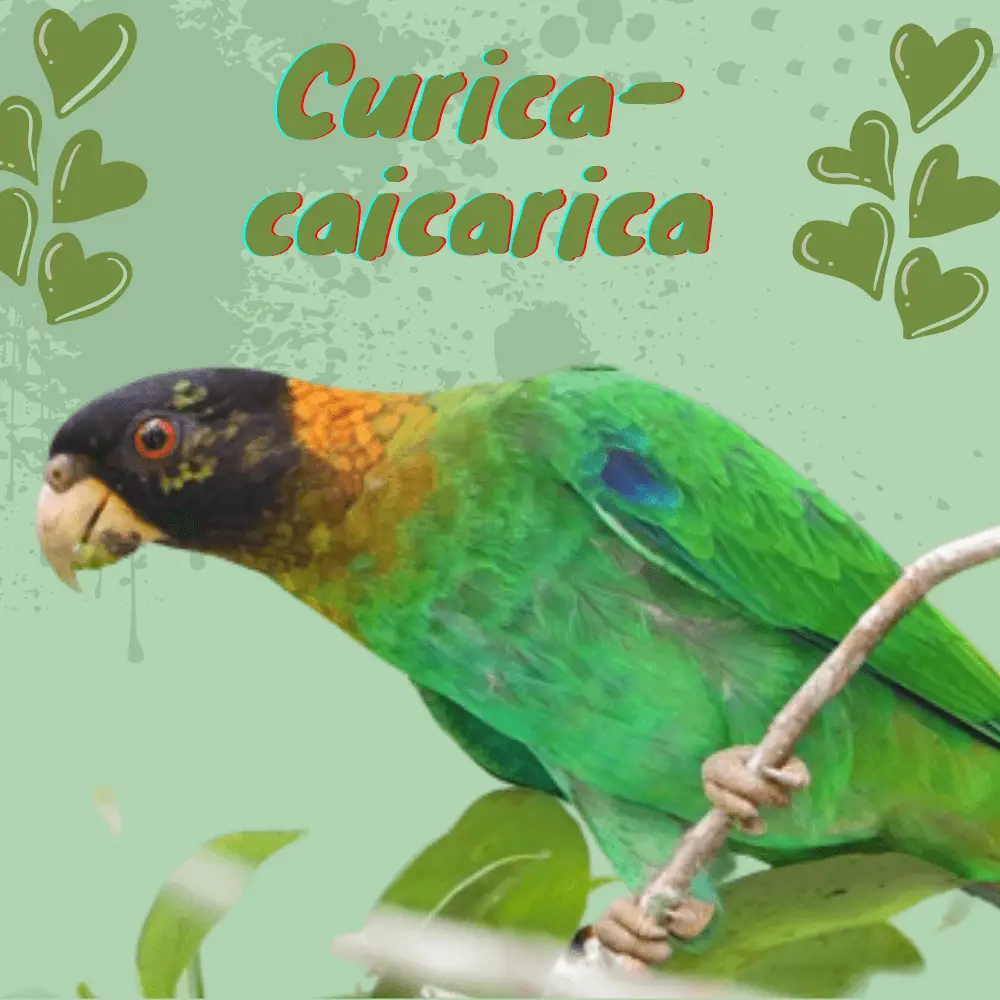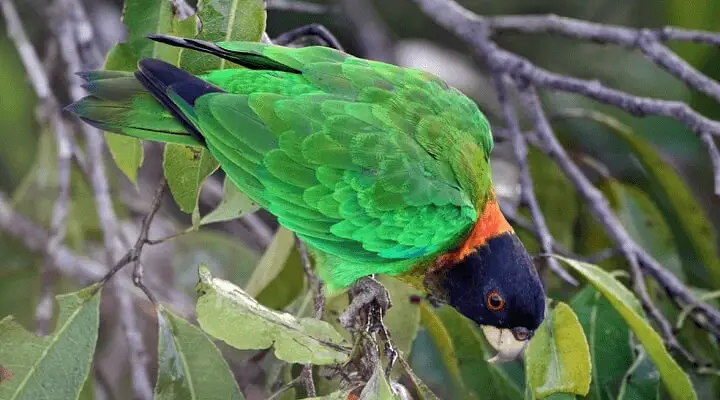
The Curica-caica in the Psittacidae family. Its scientific name is Pyrilia caica being known in English as Caica Parrot. It is popularly known as curica, aiuru-curuca, parrot-curica, kuritzaká, curau, parrot-greek, aiurucatinga, ajurucatinga, ajurucurau, ajurucuruca, curuca, green-encounters, puffin parrot, parrot, mangrove parrot, and curica- in a black hat. See other species of parrot
Caica Parrot – Amazon
SOURCE:Mr Fred’s Wildlife Channel
Distribution of curica-caica
This is a native of Brazil. It can also be found in the eastern Andes, Colombia, Ecuador, Peru, Bolivia, Venezuela, Guyana, Suriname, and Trinidad and Tobago.
In Brazil the species is found in the Amazon Basin, Amazonas, Amapá, Mato Grosso, Pará, Goiás, Maranhão, Piauí, Bahia, Espírito Santo, Rio de Janeiro, São Paulo and Paraná.
Physical characteristics of curica-caica
They are relatively small. They measure up to 23 centimeters in length and weigh from 150 to 170 grams. It has a short tail and adults are predominantly green. The head is black, yellow neck, has olive-green wings, gray iris, and around the eyes has an orange ring. It has no sexual dimorphism and the life expectancy of the bird is 40 years.
Feeding of curica-caica
The basis of the diet of caica parrot is apple, pear, banana, orange, pomegranate, cactus fruits, mango, papaya, carrot, celery, green beans, peas in the pod, nectar, seeds such as corn, millet, safflower, oat, hemp, sunflower and seed germinated in nature, that is, it is quite varied.

Reproduction of curica-caica
Captive Pyrilia caica reproduce in large hanging cages or nurseries. In nature, the nest is in the treetops. In this environment, you can reproduce in groups or only with your partner.
The curica-caica female will lay 1 to 3 eggs and hatch them alone. The male will help to treat and protect the caica parrot cub until it is ready to live on its own.
Curiosities about curica-caica
The deforestation of the Amazon to raise cattle and plant soybeans has contributed to hampering the breeding and survival of this species, which despite not having a melodious song, ends up attracting poachers due to its plumage. This species can be seen in small groups outside the breeding season.
Corner of curica-caica
The caica parrot is not very vocal, and practically all calls are made in flight, with a nasal sound, similar to the sound of a horn.
caica parrot sounds
How to download or listen to curica-caica songs
You can download on our website, for that just click with the right button on top of the name of the corner, then click on “Save Link As…” and choose the place where it will be saved. You can also listen, just click on the play button.




















